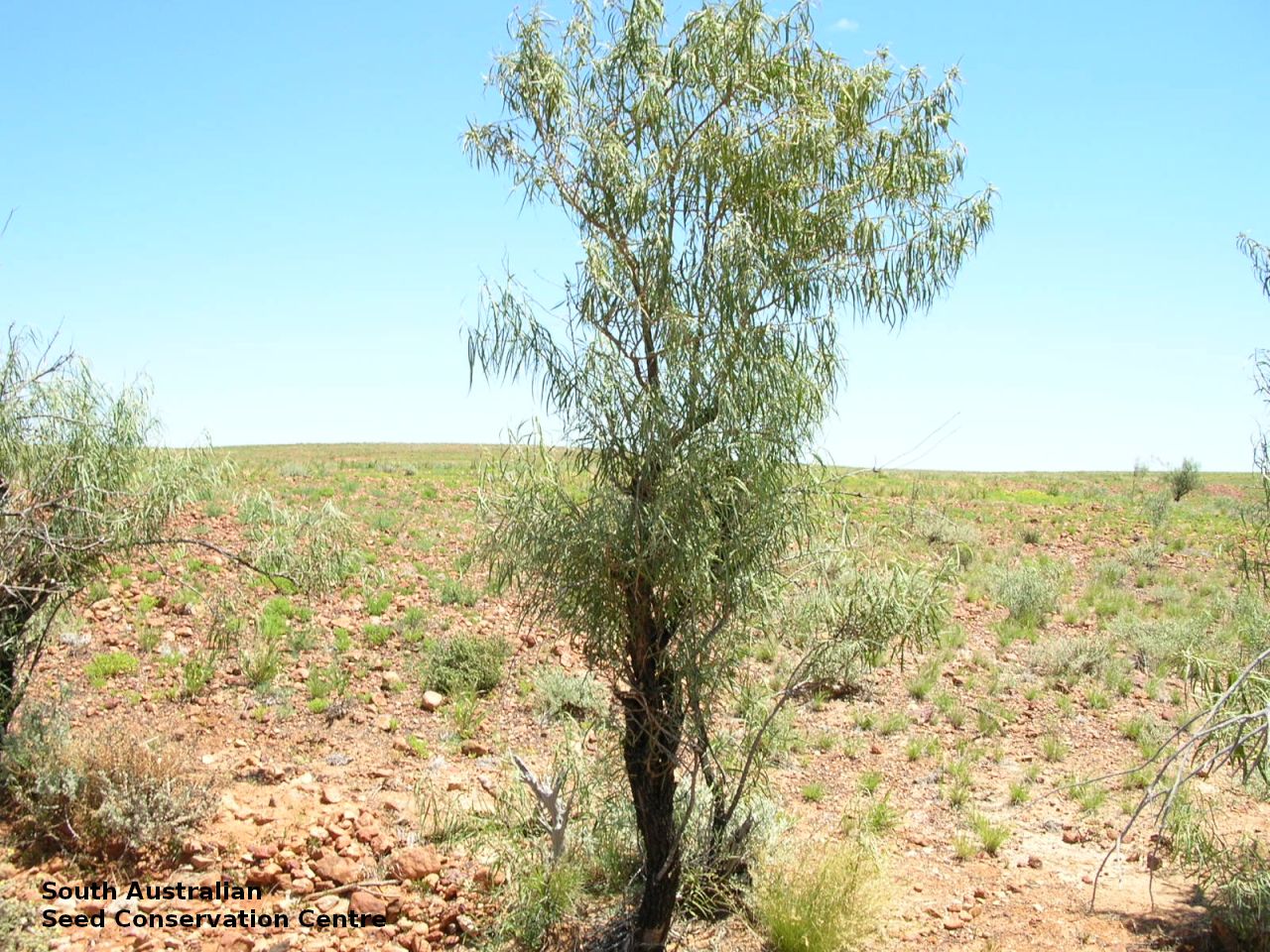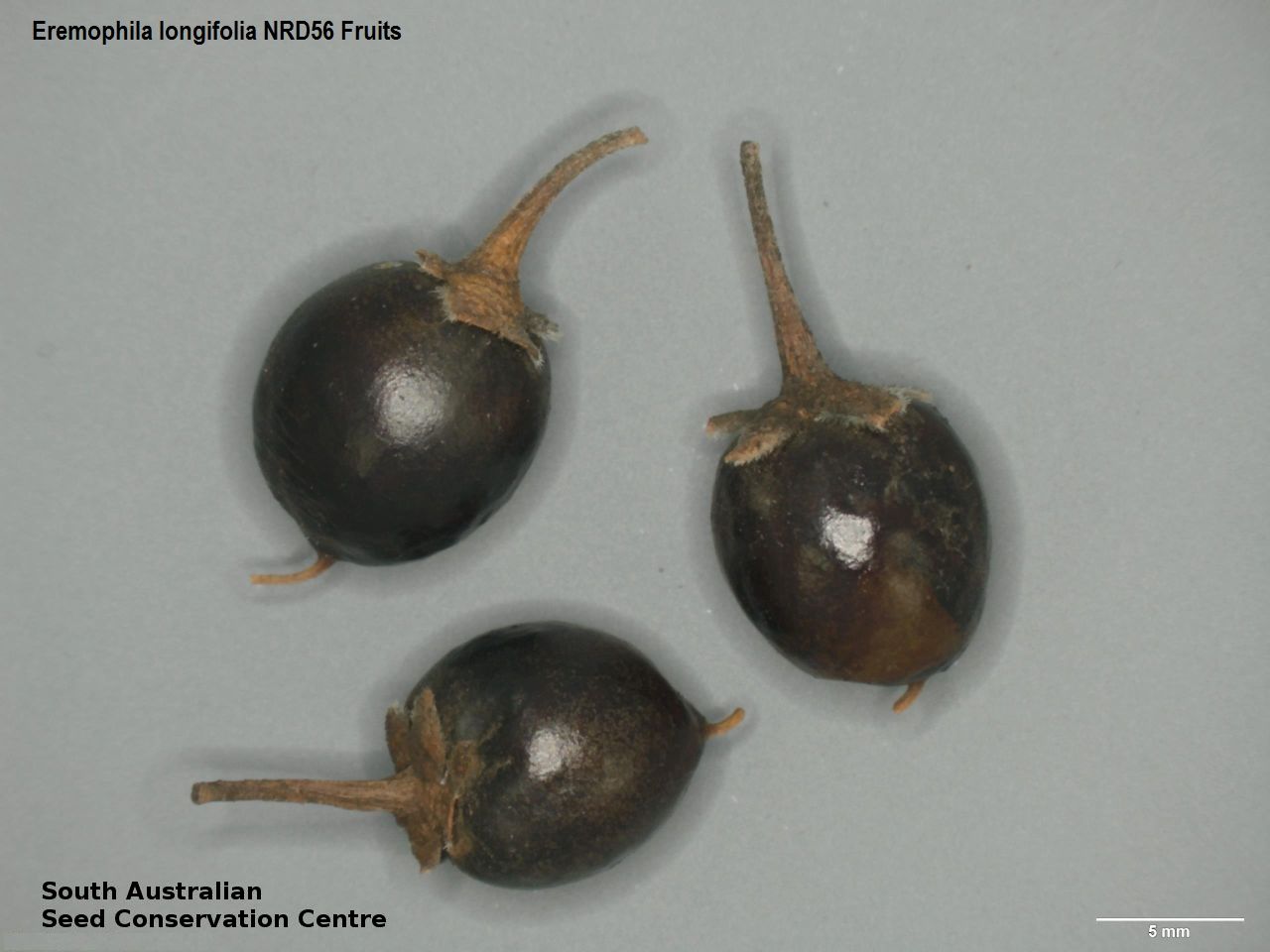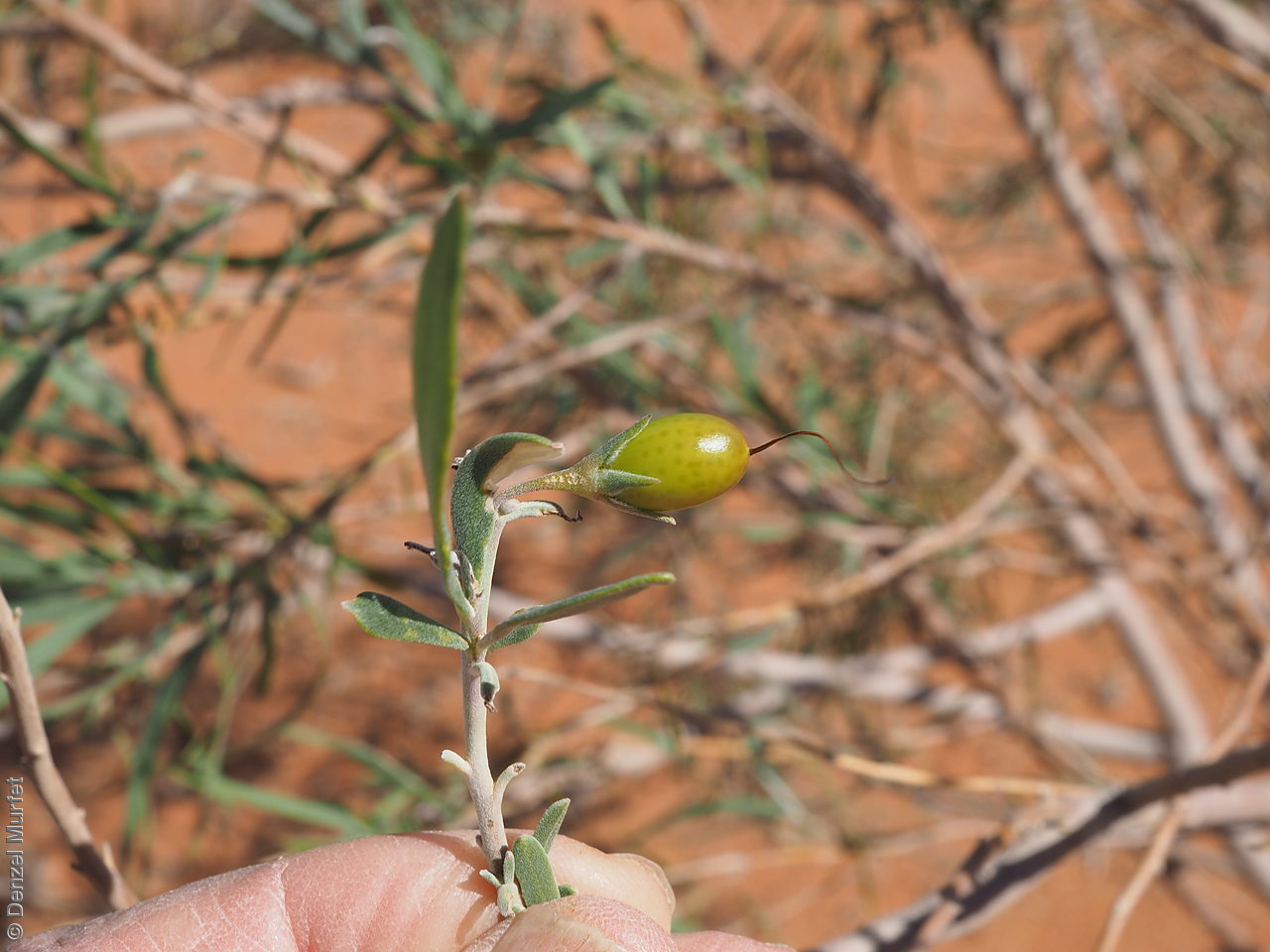Long-leaf Emubush,
Weeping Emubush
Display all 17 images

















Regional Species Conservation Assessments per IBRA subregion.


Least concern
Near threatened
Rare
Vulnerable
Endangered
Critically endangered
Extinct
Data deficient
Adelaide
Arkaroola
Ceduna
Coober Pedy
Hawker
Innamincka
Marla
Marree
Mount Gambier
Oodnadatta
Renmark
Wudinna
Keith
Yunta
Display IBRA region text
| Fleurieu (KAN02) | Kanmantoo | Rare (IUCN: RA d(i,ii)) [suckering, hardy sp] |
| Mount Lofty Ranges (FLB01) | Flinders Lofty Block | Rare (IUCN: RA d(i,ii)) (Probable Decline) [suckering hardy sp; roadside pops trashed] |
| Broughton (FLB02) | | Least Concern |
| Olary Spur (FLB03) | | Least Concern |
| Southern Flinders (FLB04) | | Least Concern |
| Northern Flinders (FLB05) | | Least Concern |
| Central Flinders (FLB06) | | Least Concern |
| Southern Yorke (EYB01) | Eyre Yorke Block | Endangered (IUCN: EN A2c) (Definite Decline) [Relicts on roadsides, clonal spp, may not be there now.] |
| St Vincent (EYB02) | | Least Concern |
| Eyre Hills (EYB03) | | Least Concern |
| Eyre Mallee (EYB05) | | Least Concern |
| South Olary Plain (MDD01) | Murray Darling Depression | Least Concern [grazed by goats; suckers] |
| Murray Mallee (MDD02) | | Near Threatened |
| Braemer (MDD07) | | Least Concern |
| Murray Scroll Belt (RIV06) | Riverina | Near Threatened |
| Myall Plains (GAW01) | Gawler | Least Concern |
| Gawler Volcanics (GAW02) | | Least Concern |
| Gawler Lakes (GAW03) | | Least Concern |
| Arcoona Plateau (GAW04) | | Least Concern |
| Kingoonya (GAW05) | | Least Concern |
| Torrens (GAW06) | | Least Concern |
| Roxby (GAW07) | | Least Concern |
| Commonwealth Hill (GAW08) | | Least Concern |
| Maralinga (GVD03) | Great Victoria Desert | Least Concern |
| Kintore (GVD04) | | Least Concern |
| Tallaringa (GVD05) | | Least Concern |
| Yellabinna (GVD06) | | Least Concern |
| Carlisle (NUL01) | Nullarbor | Least Concern |
| Nullarbor Plain (NUL02) | | Least Concern |
| Barrier Range (BHC01) | Broken Hill Complex | Least Concern |
| Barrier Range Outwash (BHC04) | | Least Concern |
| Bimbowrie (BHC05) | | Least Concern |
| Curnamona (BHC06) | | Least Concern |
| Simpson Desert (SSD02) | Simpson Strzelecki Dunefields | Least Concern |
| Dieri (SSD03) | | Least Concern |
| Strzelecki Desert (SSD05) | | Least Concern |
| Breakaways (STP01) | Stony Plains | Least Concern |
| Oodnadatta (STP02) | | Least Concern |
| Murnpeowie (STP03) | | Least Concern |
| Peake-Dennison Inlier (STP04) | | Least Concern |
| Macumba (STP05) | | Least Concern |
| Witjira (STP06) | | Least Concern |
| Baltana (STP07) | | Least Concern |
| Sturt Stony Desert (CHC02) | Channel Country | Least Concern |
| Diamantina-Eyre (CHC04) | | Least Concern |
| Coongie (CHC06) | | Least Concern |
| Lake Pure (CHC07) | | Least Concern |
| Mann-Musgrave Block (CER01) | Central Ranges | Least Concern |
| Watarru (CER02) | | Least Concern |
| Everard Block (CER03) | | Least Concern |
| Tieyon (FIN03) | Finke | Least Concern |
| Pedirka (FIN04) | | Least Concern |
| Fleurieu (KAN02) | Kanmantoo | Rare (IUCN: RA d(i,ii)) [suckering, hardy sp] |
| 6 of 6 subregions | Flinders Lofty Block | Least Concern , Rare |
| 4 of 5 subregions | Eyre Yorke Block | Least Concern , Endangered |
| 3 of 6 subregions | Murray Darling Depression | Least Concern , Near Threatened |
| Murray Scroll Belt (RIV06) | Riverina | Near Threatened |
| 8 of 8 subregions | Gawler | Least Concern |
| 4 of 4 subregions | Great Victoria Desert | Least Concern |
| 2 of 3 subregions | Nullarbor | Least Concern |
| 4 of 4 subregions | Broken Hill Complex | Least Concern |
| 3 of 4 subregions | Simpson Strzelecki Dunefields | Least Concern |
| 7 of 7 subregions | Stony Plains | Least Concern |
| 4 of 4 subregions | Channel Country | Least Concern |
| 3 of 3 subregions | Central Ranges | Least Concern |
| 2 of 2 subregions | Finke | Least Concern |
Botanical art
Kath Alcock paintings: 5
Prior names
Stenochilus longifolius
Common names
Long-leaf Emubush
Weeping Emubush
Etymology
Eremophila from the Greek 'eremophiles' meaning loving solitude or desert; alluding to the habitat. Longifolia from Latin meaning with long leaves.
Distribution and status
Found across much of South Australia except for Kangaroo Island and the South-east, growing in a variety of communities on most soil types, widespread on the plains and in the ranges. Also found in all mainland states. Native. Common in South Australia. Common in the other states.
Herbarium regions: North Western, Lake Eyre, Nullarbor, Gairdner-Torrens, Flinders Ranges, Eastern, Eyre Peninsula, Murray, Yorke Peninsula, Southern Lofty, Green Adelaide
AVH map: SA distribution map (external link)
Plant description
Grey to green shrub or small tree 8 m tall, frequently root-suckering and forming dense stands. Leaves alternate, linear-lanceolate, to 200 mm long and 14 mm wide, acuminate often with a hooked tip, pubescent to tomentose. Flowers in clusters of 1–5 in axils with red to brownish red, spotted or unspotted tubular flowers. Flowering all year round. Fruits are dark red to black ovoid-oblong fruit to 12 mm long and 12 mm, fleshy, shiny. Seed embryo type is linear fully developed.
Seed collection and propagation
Collect seeds between January and December. Collect mature fruits when skin begins to crinkle, either from the tree directly or off the ground beneath it. Soak fruit with 1% pectinase for 24 hours, then rub gently through sieves to remove unwanted material. Rub and change the water a few times until all the fresh are removed. Leave the cleaned seed to dry and then store with a desiccant such as dried silica beads or dry rice, in an air tight container in a cool and dry place. Germination 10%, seed sterilised (10% Demestos solution for 5min), then scarified (covering structure removed) on 1% w/v agar, 12/12 dark/light, 31°C. See http://data.kew.org.sid
Germination table:
Display















